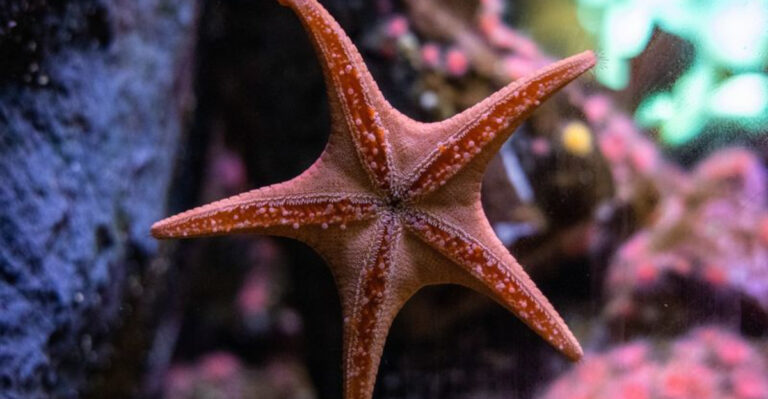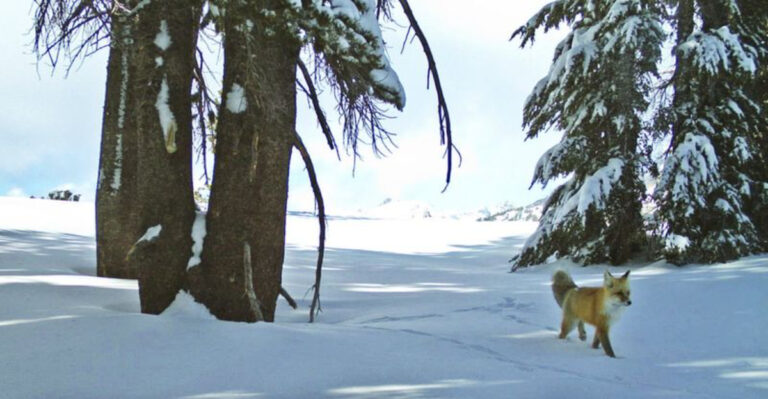16 Countries And Rainforests Where Wild Sloths Live
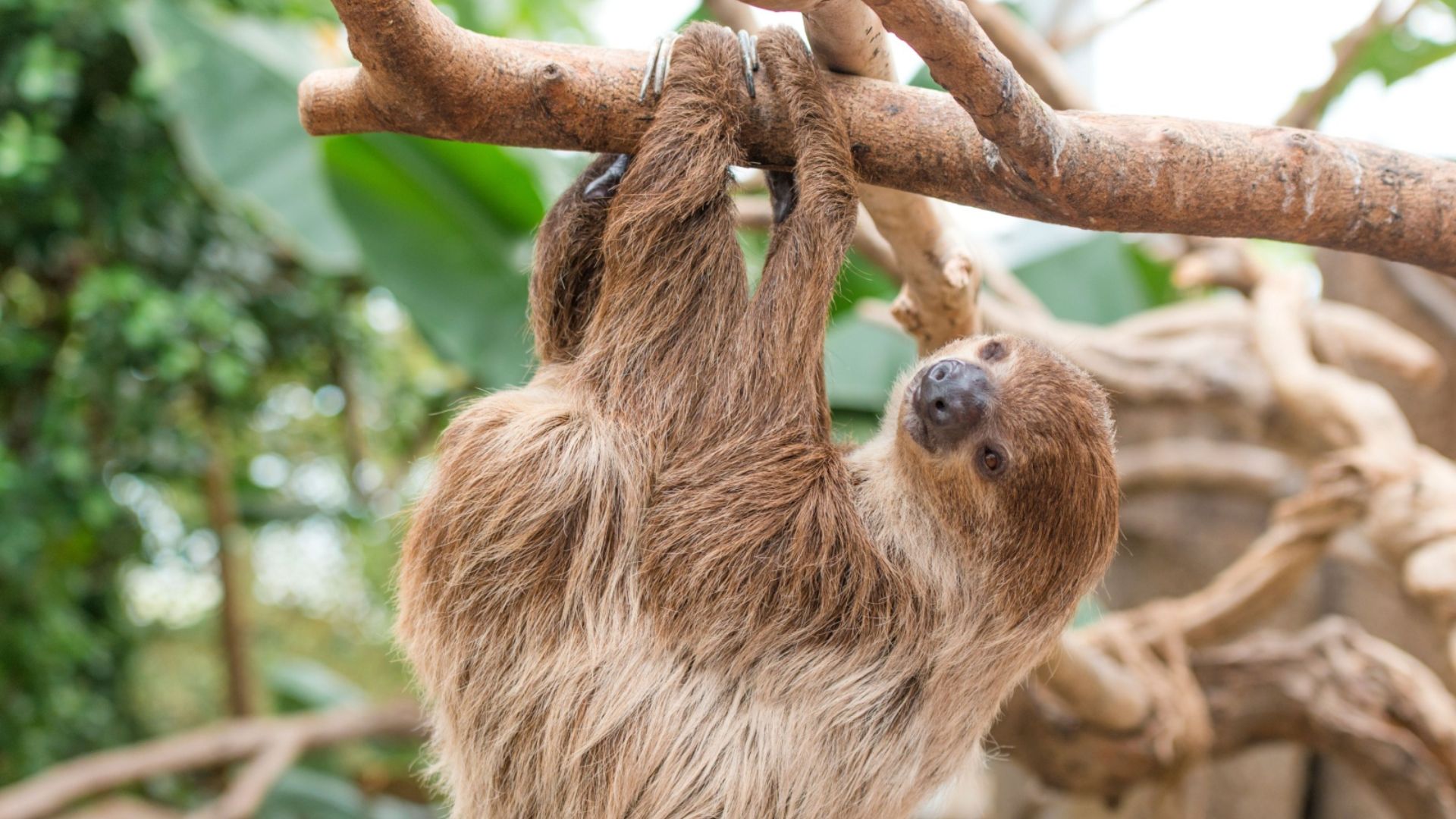
Slow, steady, and irresistibly charming, sloths are the ultimate masters of relaxation. These tree-dwelling creatures spend their days hanging out – literally – in some of the most breathtaking rainforests on Earth.
But where exactly can you find these laid-back legends in the wild? From the lush jungles of South America to hidden tropical havens, let’s explore the countries and rainforests where wild sloths call home!
1. Brazil: Amazon Rainforest
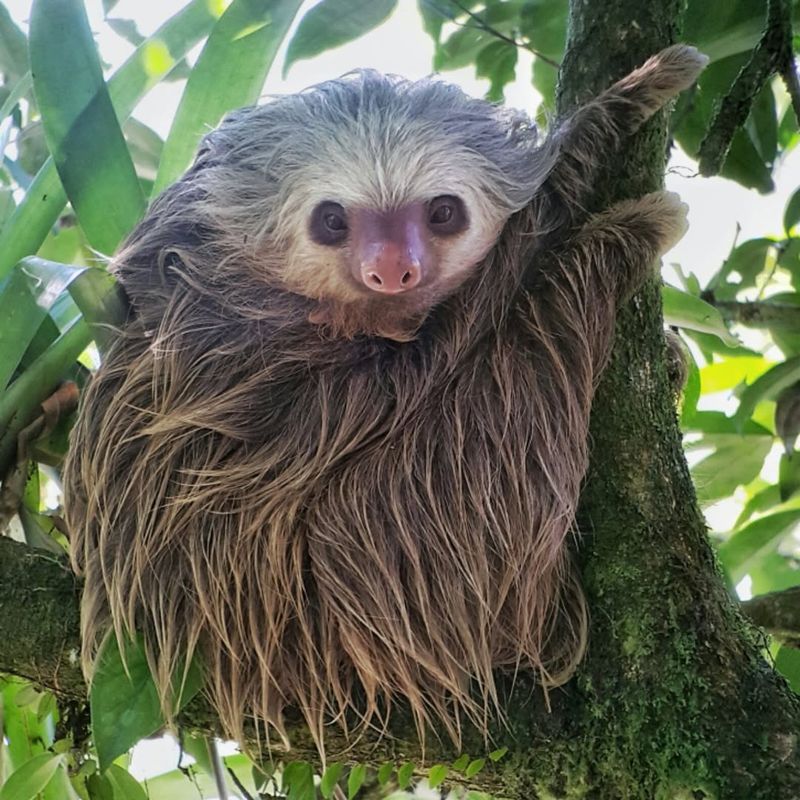
Brazil’s Amazon Rainforest is a vibrant ecosystem teeming with life, and it’s no wonder that sloths find it a haven. With towering trees and a dense canopy, this rainforest provides the perfect cover for sloths to hide from predators. The Amazon boasts an incredible diversity of flora and fauna, offering sloths a rich diet of leaves and fruits.
In this lush paradise, sloths can be seen lazily dangling from tree branches, blending seamlessly into their surroundings. The quiet rustle of leaves is often the only indication of their presence. These slow-moving creatures have adapted remarkably well to their environment, using their slow pace as a survival strategy.
The Amazon is not just a home for sloths; it’s a vital part of the Earth’s ecosystem. Protecting this rainforest ensures the survival of countless species, including our sluggish friends. Visitors to the Amazon are often enchanted by its beauty and the chance to witness sloths in their natural habitat.
2. Costa Rica: Monteverde Cloud Forest

Nestled in the highlands of Costa Rica, the Monteverde Cloud Forest is a magical place where sloths thrive amidst lush greenery and perpetual mist. This unique habitat is characterized by its cloud cover, which provides a moist environment for a wide variety of plant and animal species.
Sloths are particularly fond of this area due to the abundant epiphytes and tender leaves that make up their diet. The cloud forest’s elevation and climate create a serene atmosphere, perfect for sloths to go about their unhurried lifestyles. Their leisurely movements are a testament to the tranquility of their surroundings.
Monteverde is a popular destination for nature lovers and eco-tourists, eager to catch a glimpse of these enigmatic creatures. The conservation efforts in the region ensure that sloths and other wildlife continue to flourish amidst the clouds, maintaining the delicate balance of this extraordinary ecosystem.
3. Panama: Soberanía National Park
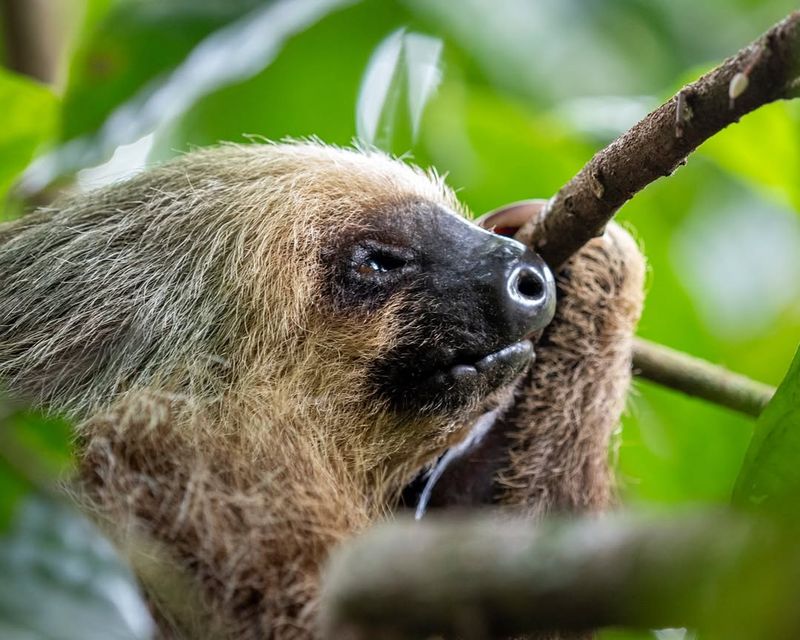
Soberanía National Park in Panama is a treasure trove of biodiversity, where sloths find refuge among the dense foliage and towering trees. This protected area is home to a wide variety of wildlife, making it an ideal spot for sloth enthusiasts to observe these creatures in their natural environment.
The park’s rich vegetation provides plenty of food for sloths, who spend their days munching on leaves and lounging in the treetops. The tranquil surroundings are perfect for these slow-moving animals, allowing them to lead a peaceful existence away from the hustle and bustle of city life.
Visitors to Soberanía can explore the park’s numerous trails, keeping an eye out for sloths as they navigate the lush landscape. The experience of witnessing these gentle animals in the wild is both humbling and exhilarating, leaving a lasting impression on all who venture into this Panamanian paradise.
4. Peru: Manú National Park
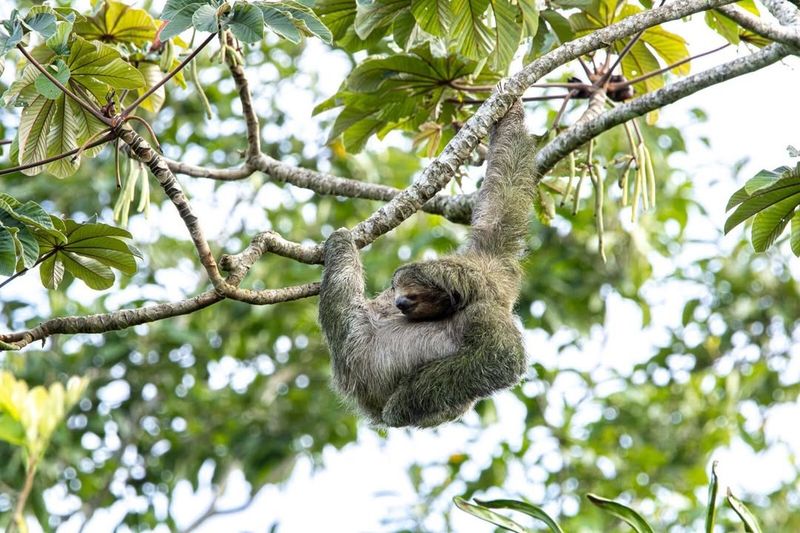
Renowned for its incredible biodiversity and pristine rainforests, this UNESCO World Heritage site serves as a sanctuary for sloths and countless other species. Nestled within Peru, the protected area offers an ideal environment where these slow-moving creatures thrive among its rich flora and fauna.
With ecosystems ranging from lowland rainforests to cloud forests and Andean grasslands, sloths have a diverse range of habitats to explore. Their long limbs and curved claws help them navigate the dense canopy with ease, making them perfectly suited for a treetop lifestyle.
A steady diet of leaves and fruits sustains them, as they take full advantage of the park’s abundant resources. The peaceful surroundings provide the perfect setting for their relaxed way of life, undisturbed by modern disruptions. Thanks to ongoing conservation efforts, this remarkable wilderness remains a haven for sloths and the many creatures that share their home.
5. Ecuador: Yasuni National Park
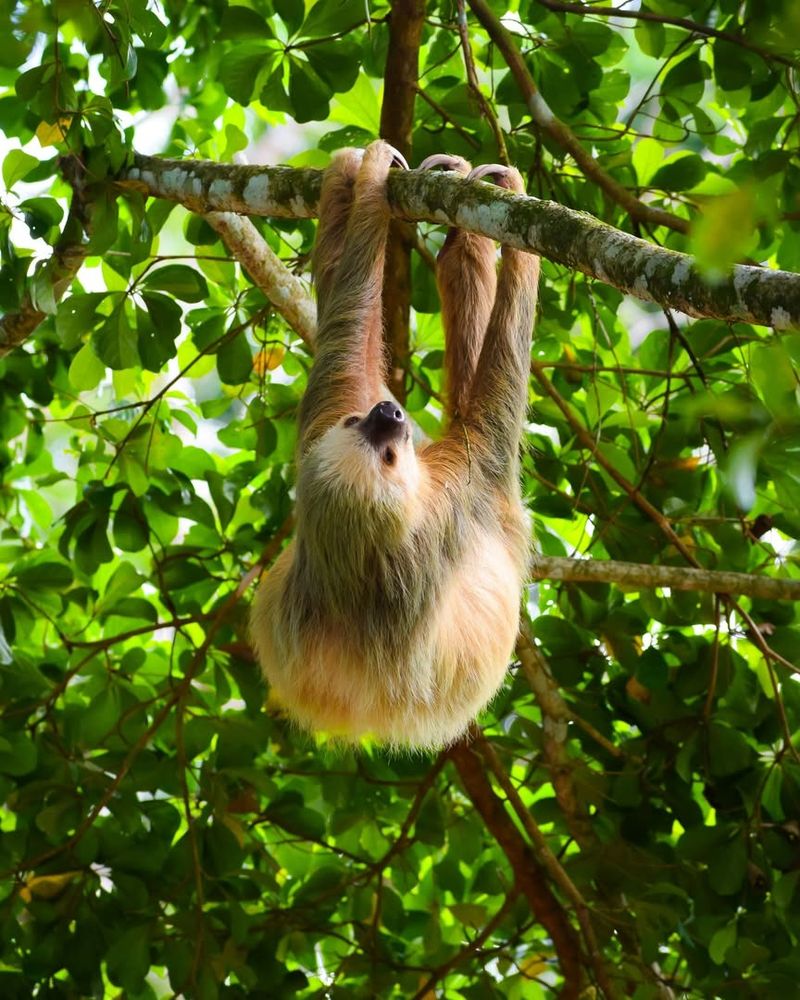
A true biodiversity hotspot, this lush and vibrant rainforest provides the perfect sanctuary for sloths, nestled among its dense jungle canopy. Home to an astonishing variety of plant and animal life, this protected region offers an ideal environment where sloths can thrive undisturbed.
Towering trees and tangled vines create a rich ecosystem filled with abundant leaves, the primary food source for these slow-moving creatures. Suspended from branches, they appear frozen in time, embracing their unhurried way of life high above the forest floor.
This unique environment fosters a delicate balance of species, with sloths perfectly adapted to the challenges of such a diverse habitat. Conservation efforts play a crucial role in protecting this natural wonder, ensuring that sloths and countless other creatures continue to flourish in this tropical paradise.
6. Colombia: Tayrona National Natural Park
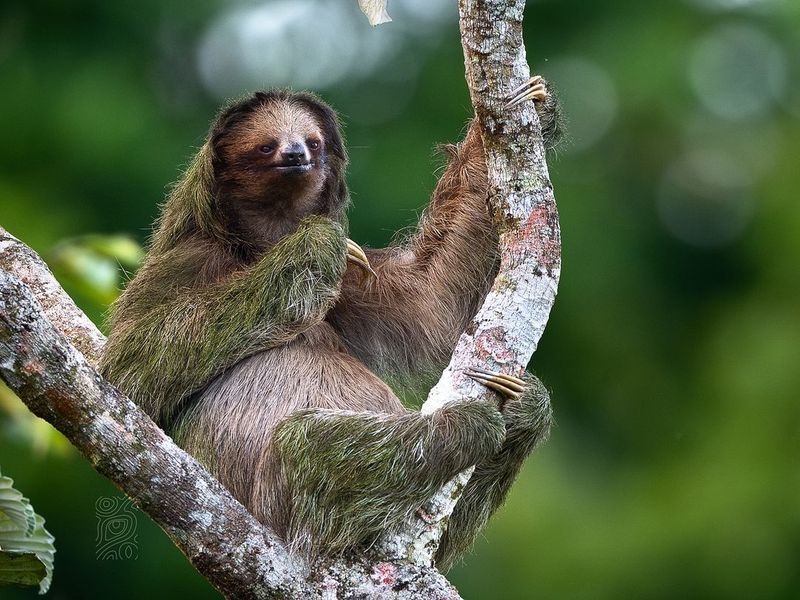
Tayrona National Natural Park in Colombia is a coastal gem where sloths find solace in its lush rainforests and sandy beaches. This protected area boasts a stunning array of landscapes, from dense jungles to crystal-clear waters, offering sloths a diverse habitat to call home.
Sloths in Tayrona are often seen lounging in the treetops, enjoying the gentle ocean breeze that sweeps through the forest. The park’s rich vegetation provides an ample supply of leaves and fruits, ensuring that sloths have all they need to thrive in this idyllic setting.
Visitors to Tayrona are treated to breathtaking views and the chance to encounter sloths in their natural habitat. The park’s conservation efforts help preserve this unique ecosystem, allowing sloths and other wildlife to flourish along Colombia’s Caribbean coast.
7. Venezuela: Canaima National Park
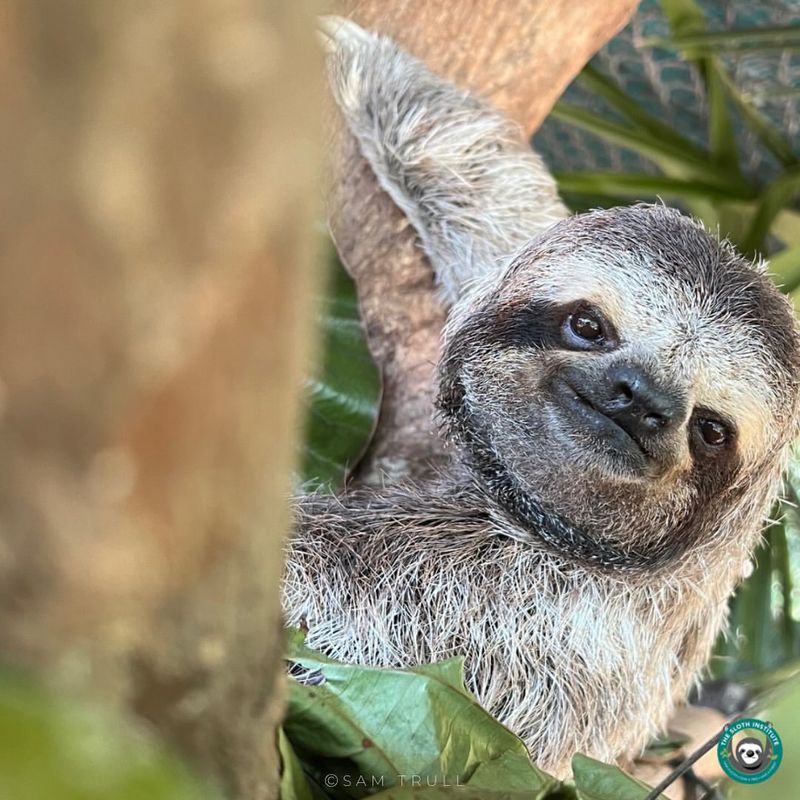
A breathtaking land of towering waterfalls and sprawling landscapes, this UNESCO World Heritage site serves as a sanctuary for sloths amid its stunning biodiversity. With a mix of savannas, rainforests, and ancient tepuis, the diverse ecosystems provide these slow-moving creatures with the perfect treetop refuge.
Adaptable and graceful, sloths navigate the lush canopy at their own leisurely pace, blending seamlessly into their surroundings. The park’s rich plant life offers them ample food, while its vast, untouched wilderness ensures they can thrive undisturbed.
A true paradise for nature lovers, this remarkable location remains a haven for sloths and countless other species. Ongoing conservation efforts help protect its fragile ecosystems, ensuring its beauty and wildlife remain preserved for generations to come.
8. Bolivia: Madidi National Park
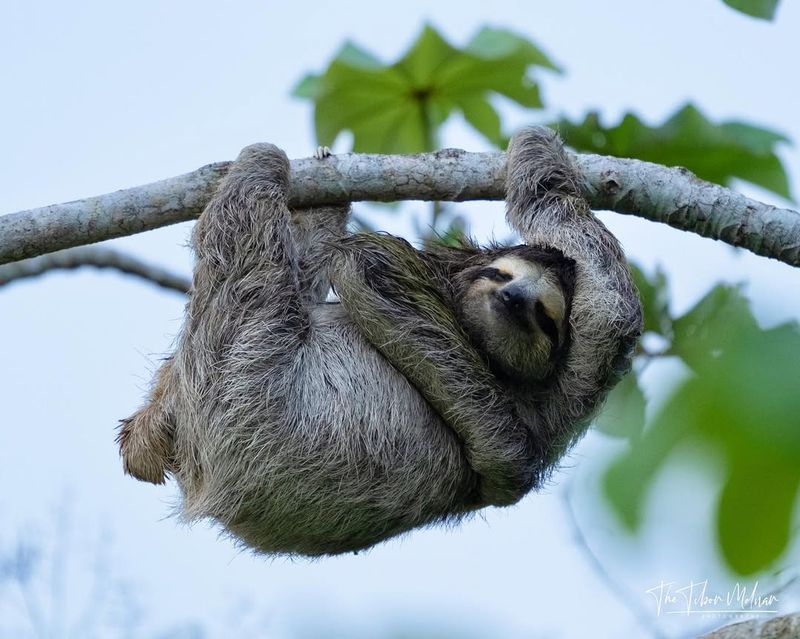
Madidi National Park in Bolivia is a treasure trove of biodiversity, where sloths find sanctuary amidst its dense jungles and pristine landscapes. This protected area is home to an astonishing variety of plant and animal species, making it an ideal habitat for sloths to thrive.
The park’s lush vegetation provides a bountiful supply of leaves and fruits, which sloths rely on for sustenance. The tranquil atmosphere of Madidi allows sloths to lead their slow-paced lives, blending into the canopy with ease as they move gracefully from branch to branch.
Visitors to Madidi are often captivated by the park’s breathtaking beauty and the chance to see sloths in their natural environment. Conservation efforts in the region help preserve this unique ecosystem, ensuring that sloths and other wildlife continue to flourish in this Bolivian paradise.
9. Honduras: Pico Bonito National Park
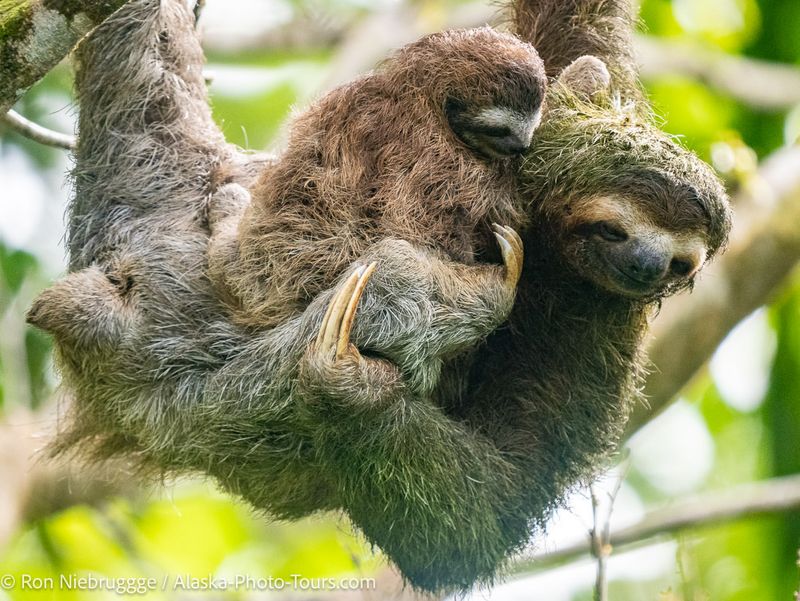
Pico Bonito National Park in Honduras is a hidden gem where sloths find refuge amidst its tropical forests and majestic peaks. This protected area is a haven for biodiversity, offering sloths a perfect environment to call home.
The park’s abundant vegetation provides a rich supply of leaves and fruits, essential for a sloth’s diet. In Pico Bonito, sloths can often be seen leisurely navigating the treetops, their slow movements a testament to the tranquil atmosphere of this natural wonder.
Nature enthusiasts visiting Pico Bonito are rewarded with stunning views and the chance to see sloths in their natural habitat. The park’s commitment to conservation ensures that sloths and other wildlife continue to thrive in this Honduran paradise, preserving its beauty for future generations.
10. Nicaragua: Indio Maíz Biological Reserve
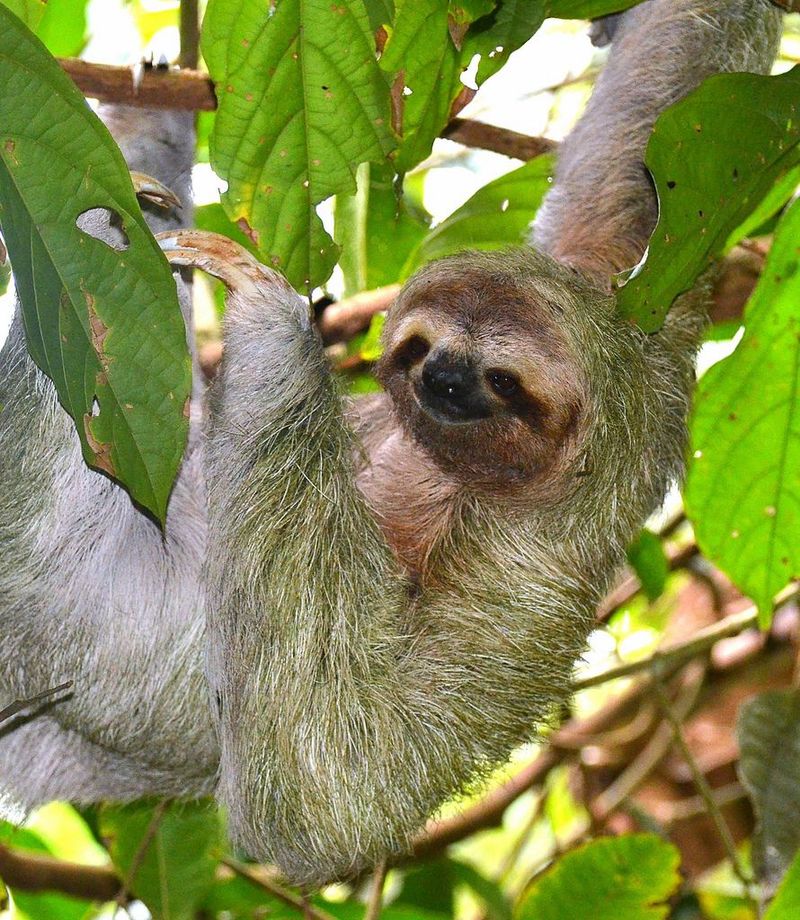
A pristine wilderness teeming with life, this protected reserve provides the perfect sanctuary for sloths within its dense forests and thriving ecosystems. As a biodiversity hotspot, it offers a rich and undisturbed environment where these slow-moving creatures can flourish.
Towering trees and tangled vines create an ideal habitat, supplying sloths with an abundance of leaves and fruits essential to their diet. Perfectly camouflaged among the branches, they spend their days hanging in the treetops, embracing their relaxed way of life.
A dream destination for wildlife enthusiasts, this remarkable reserve offers the chance to observe sloths in their natural surroundings. Thanks to ongoing conservation efforts, its delicate ecosystems remain intact, ensuring that sloths and countless other species continue to thrive for generations to come.
11. Belize: Cockscomb Basin Wildlife Sanctuary

Cockscomb Basin Wildlife Sanctuary in Belize is a lush haven where sloths find sanctuary amidst its dense jungles and pristine landscapes. This protected area is renowned for its incredible biodiversity, making it an ideal habitat for sloths to thrive.
The sanctuary’s rich vegetation provides a bountiful supply of leaves and fruits, essential for a sloth’s diet. In Cockscomb Basin, sloths can often be seen leisurely navigating the treetops, their slow movements a testament to the tranquil atmosphere of this natural wonder.
Visitors to the sanctuary are treated to breathtaking views and the chance to see sloths in their natural environment. The sanctuary’s commitment to conservation helps preserve this unique ecosystem, ensuring that sloths and other wildlife continue to flourish in this Belizean paradise.
12. Guatemala: Sierra De Las Minas Biosphere Reserve

Sierra de las Minas Biosphere Reserve in Guatemala is a protected area where sloths find refuge amidst its diverse landscapes and rich biodiversity. This biosphere reserve is a haven for wildlife, offering sloths a perfect environment to call home.
The reserve’s abundant vegetation provides a rich supply of leaves and fruits, essential for a sloth’s diet. In Sierra de las Minas, sloths can often be seen leisurely navigating the treetops, blending into the canopy with ease as they go about their slow-paced lives.
Nature lovers visiting the reserve are rewarded with stunning views and the chance to see sloths in their natural habitat. The biosphere reserve’s dedication to conservation ensures that sloths and other wildlife continue to thrive, preserving this unique ecosystem for future generations.
13. Argentina: Iguazú National Park
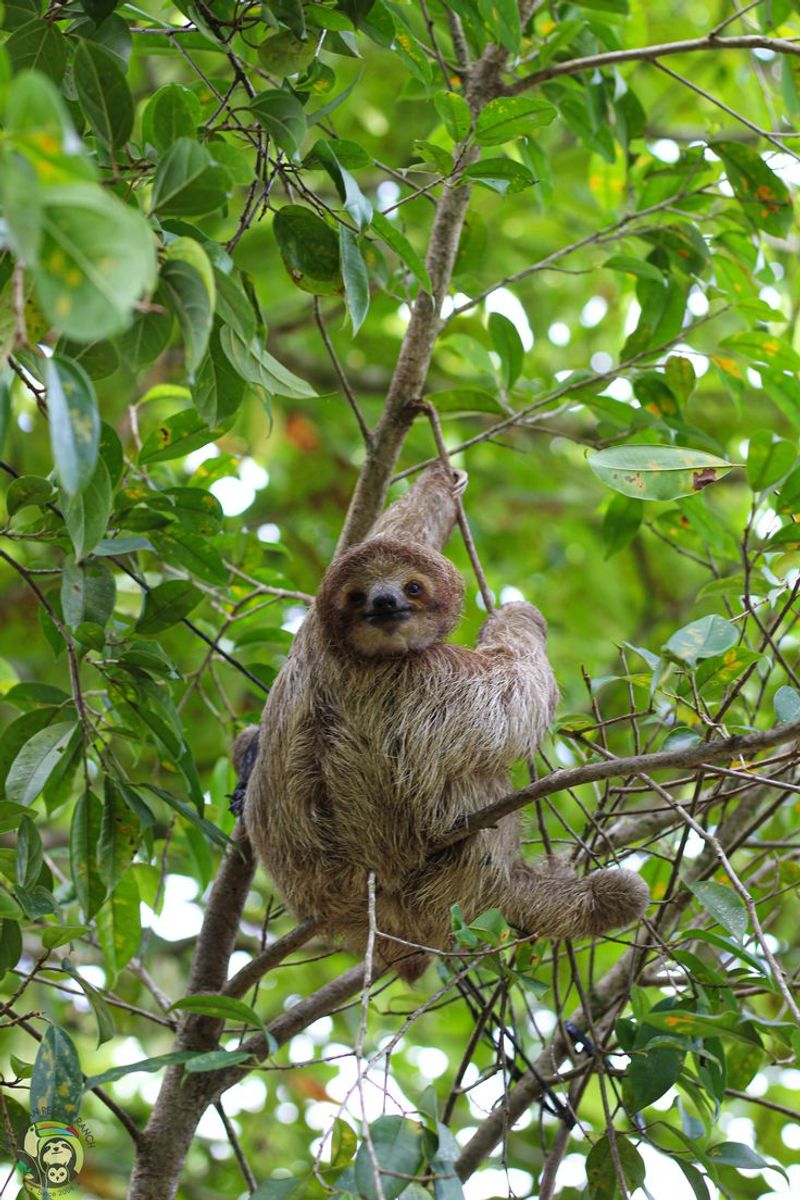
A breathtaking natural wonder, this lush rainforest is home to spectacular waterfalls and a thriving ecosystem where sloths find refuge among the dense canopy. As a UNESCO World Heritage site, it boasts remarkable biodiversity, providing an ideal habitat for these slow-moving creatures to flourish.
With abundant vegetation, the treetops offer a plentiful supply of leaves and fruits, sustaining the sloths as they navigate their tranquil world. Their leisurely movements blend seamlessly into the serene atmosphere, making them a perfect match for this untouched paradise.
Visitors are met with stunning landscapes and the rare opportunity to observe sloths in their natural habitat. Ongoing conservation efforts ensure that this incredible ecosystem remains a sanctuary, allowing sloths and countless other species to thrive for generations to come.
14. Suriname: Central Suriname Nature Reserve
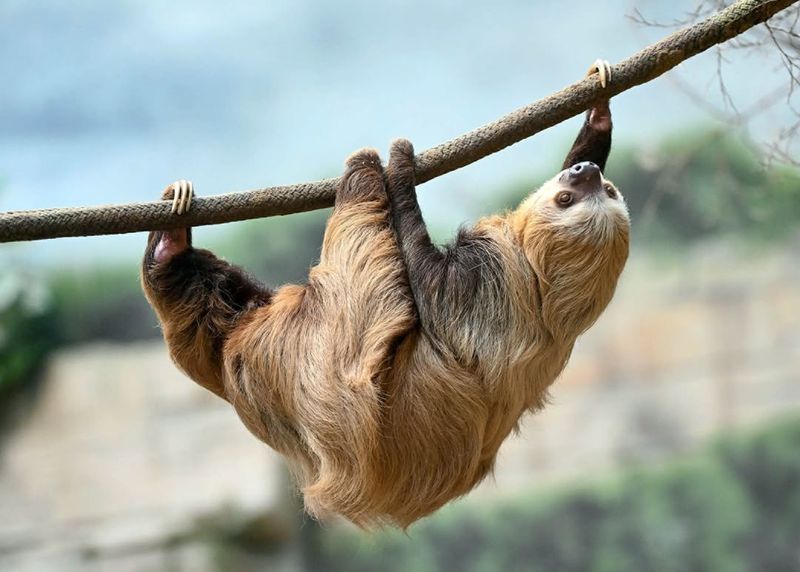
Central Suriname Nature Reserve is a vast wilderness where sloths find sanctuary amidst its dense jungles and pristine landscapes. This protected area is a UNESCO World Heritage site, providing a haven for sloths to thrive in their natural habitat.
The reserve’s lush vegetation offers a plentiful supply of leaves and fruits, essential for a sloth’s diet. Amidst the towering trees and tangled vines, sloths can be seen hanging from branches, blending seamlessly into their surroundings as they go about their unhurried lives.
Nature enthusiasts visiting the reserve are rewarded with breathtaking views and the chance to see sloths in their natural environment. The reserve’s dedication to conservation ensures that sloths and other wildlife continue to flourish, preserving this unique ecosystem for future generations.
15. Paraguay: Mbaracayú Forest Nature Reserve
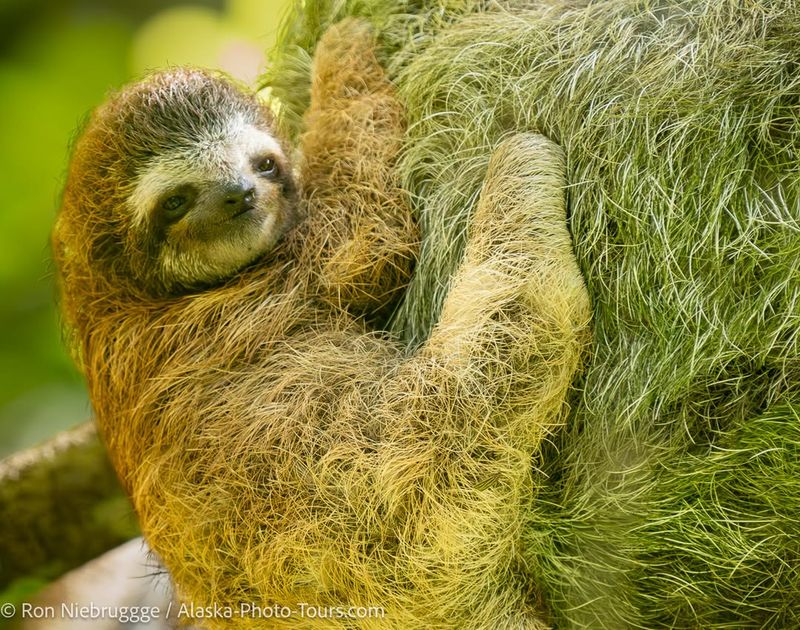
A haven of dense forests and thriving ecosystems, this protected reserve serves as a sanctuary for sloths within its rich and biodiverse landscape. As a vital conservation area, it provides the perfect refuge for these slow-moving creatures, allowing them to flourish undisturbed.
Towering trees and lush vegetation offer an abundant supply of leaves and fruits, the essentials of a sloth’s diet. Effortlessly blending into the canopy, they navigate the treetops at their own unhurried pace, moving gracefully from branch to branch.
Visitors are greeted with breathtaking scenery and the rare opportunity to observe sloths in their natural habitat. Thanks to dedicated conservation efforts, this remarkable ecosystem remains intact, ensuring that sloths and countless other species continue to thrive for generations to come.
16. French Guiana: Guiana Amazonian Park

Guiana Amazonian Park in French Guiana is a vast expanse of wilderness where sloths find sanctuary amidst its lush rainforests and diverse ecosystems. This protected area is a haven for biodiversity, providing sloths with a perfect environment to call home.
The park’s rich vegetation provides a plentiful supply of leaves and fruits, essential for a sloth’s diet. In Guiana Amazonian Park, sloths can often be seen leisurely navigating the treetops, their slow movements a testament to the tranquil atmosphere of this natural wonder.
Nature lovers visiting the park are treated to breathtaking views and the chance to see sloths in their natural environment. The park’s dedication to conservation ensures that sloths and other wildlife continue to thrive, preserving this unique ecosystem for future generations.


